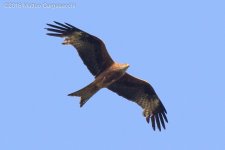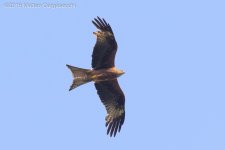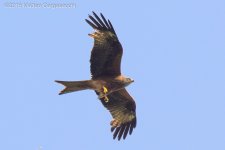Matteo Cargasacchi
Member
Hi all,
just up to clarify some doubts about this kite, seen yesterday in Bosco delle Fontane near Mantua (IT). It's an old wood with one of most important population of black kites in northern Italy.
This one was different, I'm in doubt between a subadult milvus milvus or an extremely forked tail milvus migrans.
all hints are welcome!
Thanks,
Matteo Cargasacchi
Venice - Italy
just up to clarify some doubts about this kite, seen yesterday in Bosco delle Fontane near Mantua (IT). It's an old wood with one of most important population of black kites in northern Italy.
This one was different, I'm in doubt between a subadult milvus milvus or an extremely forked tail milvus migrans.
all hints are welcome!
Thanks,
Matteo Cargasacchi
Venice - Italy









